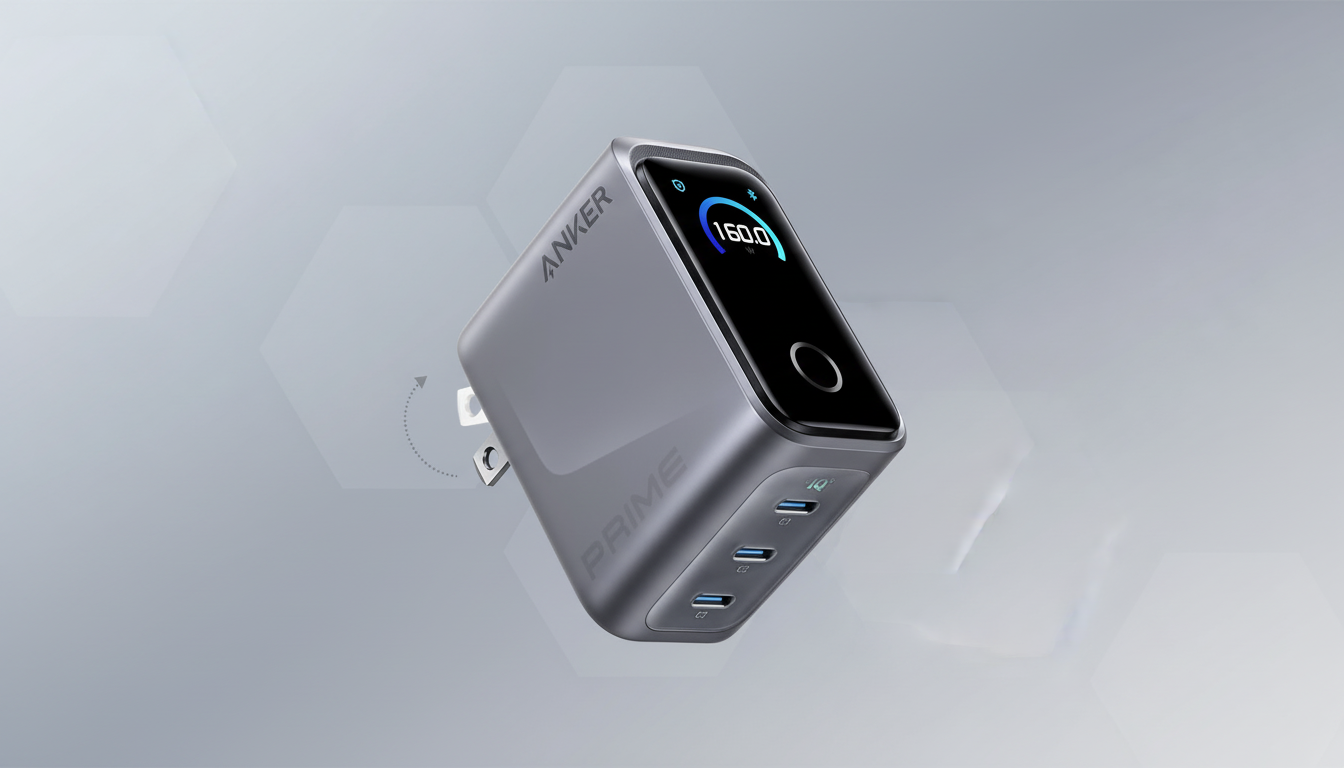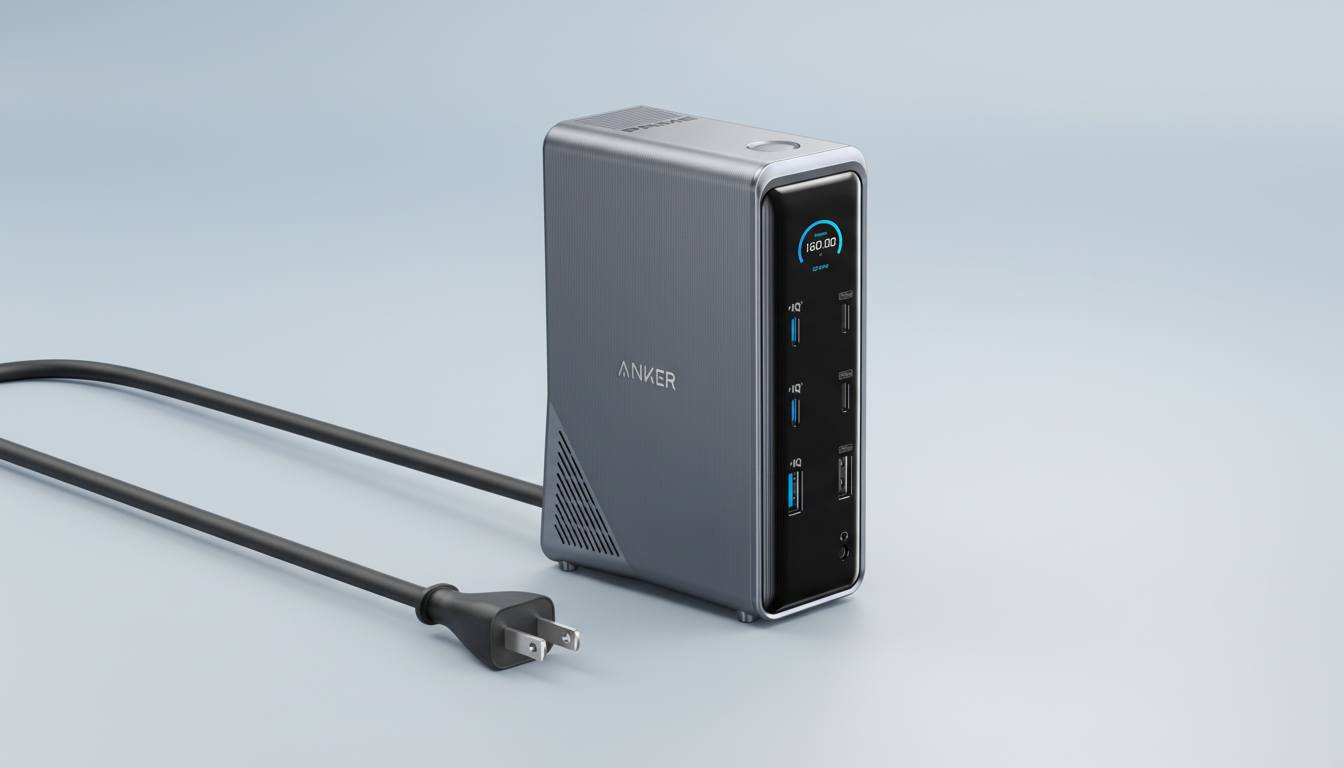A limited-time deal has dropped the Anker Prime 160W three-port GaN charger by $40, pushing the sleek powerhouse to one of its lowest prices yet. For shoppers who want a single brick that can handle a laptop, a tablet, and a phone, all plugged in at once, this is the kind of discount that makes upgrading hard to resist.
Why this 160W GaN charger stands out for power and size
The Prime 160W is, as suggested by the name, built on GaN (gallium nitride) semiconductors, which have a higher power density and better thermal behavior compared to the legacy silicon designs they replace.
- Why this 160W GaN charger stands out for power and size
- Real-world charging scenarios for laptops, tablets, and phones
- Trade-offs and safety considerations for this GaN charger
- How it compares to single-device bricks and bundled chargers
- An alternative deal for lighter needs and lower power users
- Bottom line: why this 160W Anker deal is worth considering

The body is also compact – approximately 2.6 x 2.1 x 1.4 inches and weighing about 7.8 ounces – but it manages to retain output. This is a travel charger with desk charger performance.
Three USB-C ports offer a total of 160W, with a single port supporting 140W from USB Power Delivery 3.1.
For the record, the USB Implementers Forum took the PD level to 240W under the new EPR spec, and 140W has quickly become the sweet spot for high-charge, high-performance laptops. That means this brick can also provide nearly full-speed power to 16-inch workhorses while keeping mobile gear charged.
Real-world charging scenarios for laptops, tablets, and phones
One-device charging is straightforward: plug a laptop into the primary USB-C and you can see up to 140W, depending on the machine’s draw. That’s enough to sustain heavy loads on many creator and gaming laptops that advertise a 100–140W USB-C input.
With two devices, power typically allocates around 100W to a laptop and 60W to a second device—a tablet, ultrabook, or a phone that supports high-speed PD. With three devices, common splits are 100W, 30W, and 30W—notebook running and meaningful fast charge to two smaller gadgets. Those splits match how USB PD designs power negotiation and how manufacturers rate multi-port GaN chargers.

Even 30W is plenty for phone users: Google’s Pixel line hovers around that level, and many modern Android phones pull 25–45W on USB PD PPS. For tablets, 30W keeps an iPad Pro charging while in use. The upshot is flexibility: one brick can cover a full kit without needing a power strip.
Trade-offs and safety considerations for this GaN charger
There’s no USB-A port, but that’s increasingly common as accessory makers move the industry to demand USB-C only. If you depend on older cables or peripherals, you’ll need a C-to-A adapter or select a charger with various ports. If your entire ecosystem is already USB-C, the all-C layout keeps things simple and makes PD 3.1 work at its full potential.
- On the safety front with a modern charger like this, the block builds in temperature monitoring, current regulation, and short-circuit protection. However, the USB-IF guidance warns that PD-certified designs should handle voltage step-ups carefully, specifically at 28V for 140W profiles. Anyway, every buyer must use top-quality cables with a 240W EPR rating. However, despite the high wattage applied, real-world reports indicate that GaN blocks run cooler and more efficiently than older silicon units.
How it compares to single-device bricks and bundled chargers
A 140W single-port brick that comes bundled with certain high-end laptops is excellent. With the 160W Prime, you will be getting the same speed from one port but two more USB-Cs and an impressively small footprint. What’s more, for frequent travelers and hybrid workers who generally lug about with two or three standard wall adapters, switching it up could save you bag space and hassle in airports and cafes.
An alternative deal for lighter needs and lower power users
If you don’t need 160W headroom, the 100W sibling is also currently on offer, sometimes even less, for members at the same retailer at the time of writing. It offers two USB-Cs with up to 100W single-port output each plus the USB-A for your old gear. It’s a perfect pick for ultrabook users, who won’t sway beyond the 65–100W mark and would, therefore, prefer to save that extra cash elsewhere.
Bottom line: why this 160W Anker deal is worth considering
A reduction of $40 is sufficient to make the Anker Prime 160W a compelling purchase for anyone in the market for one charger to manage a modern multi-device setup. PD 3.1’s 140W single-port capability, Intelligent Power Allocation, and a functional GaN build, which is perfect for travel, ensure that it fulfills the minimal requirements. If you’ve been putting off merging your charging arsenal, now is the perfect time to take action.

